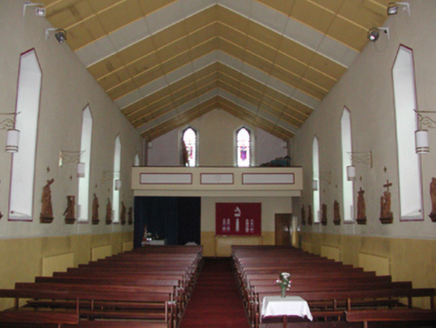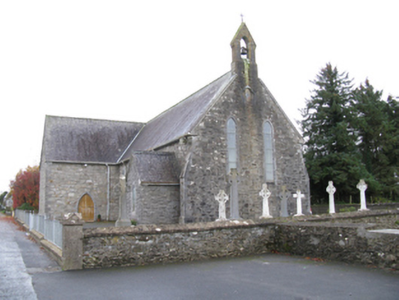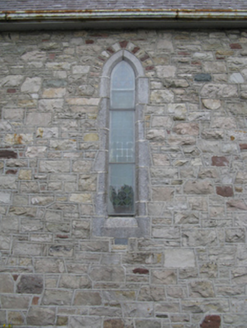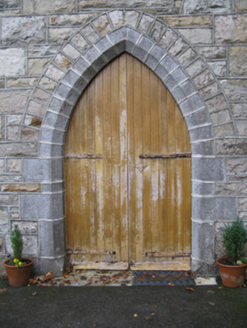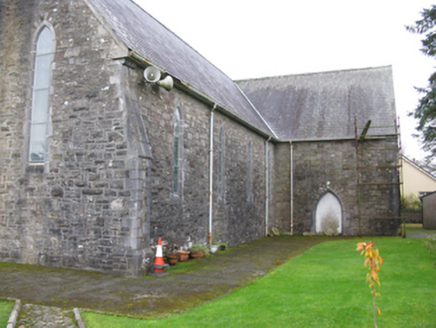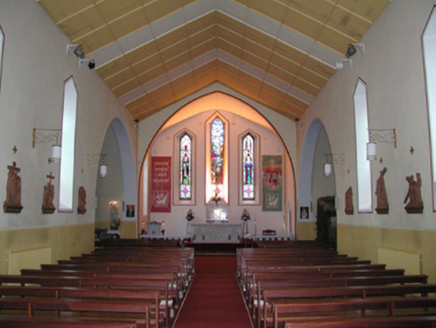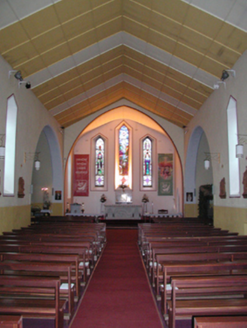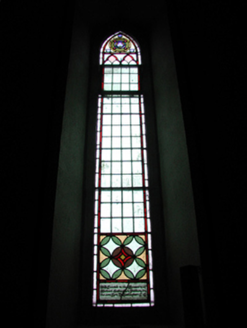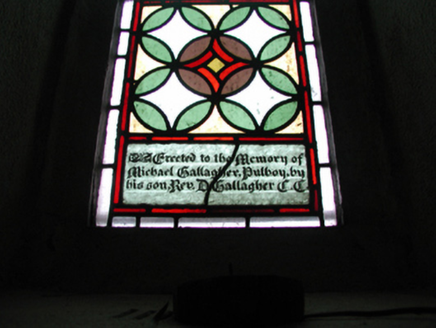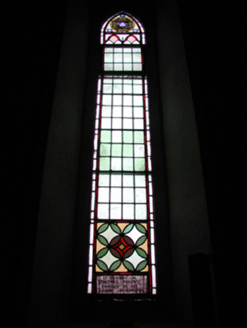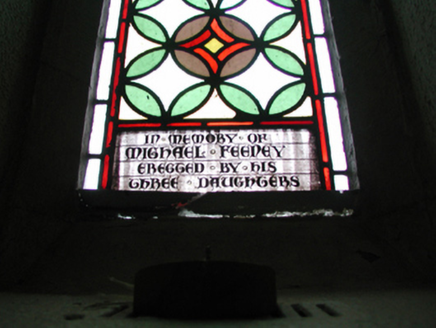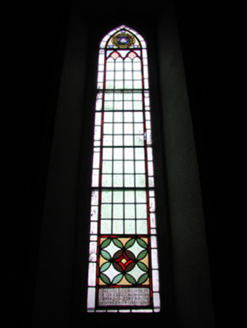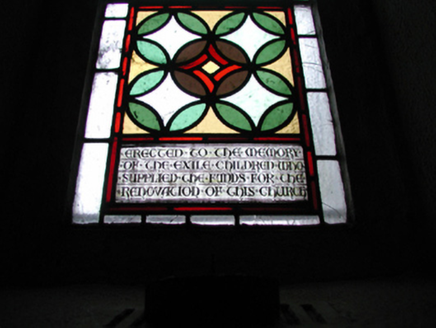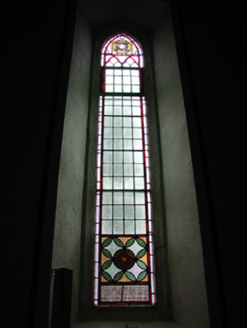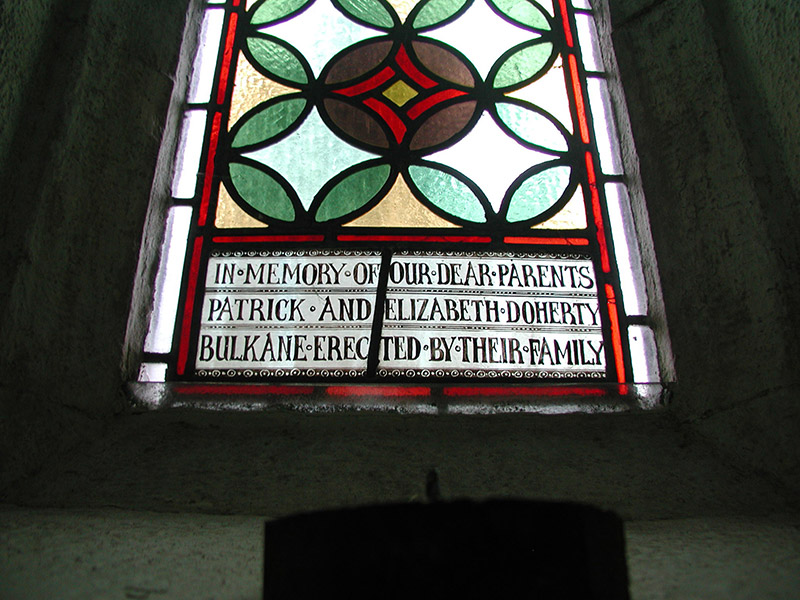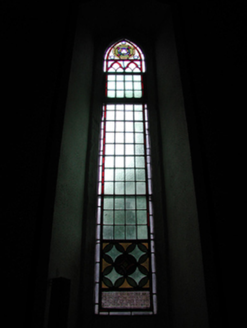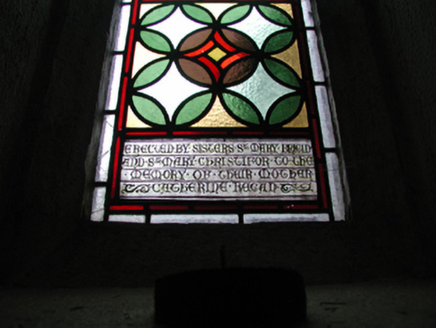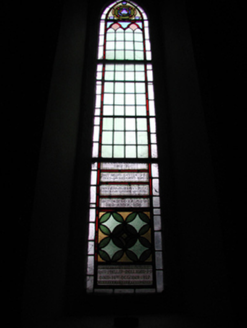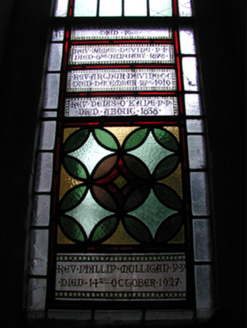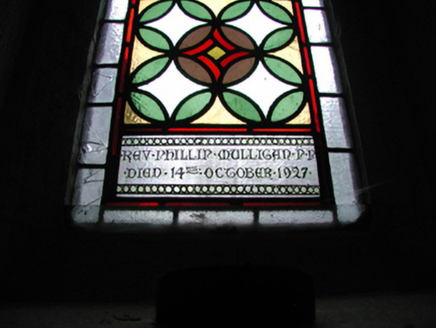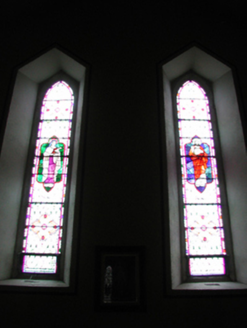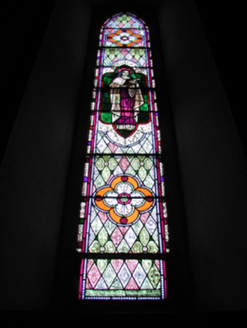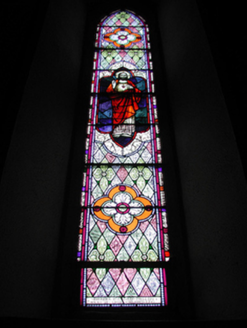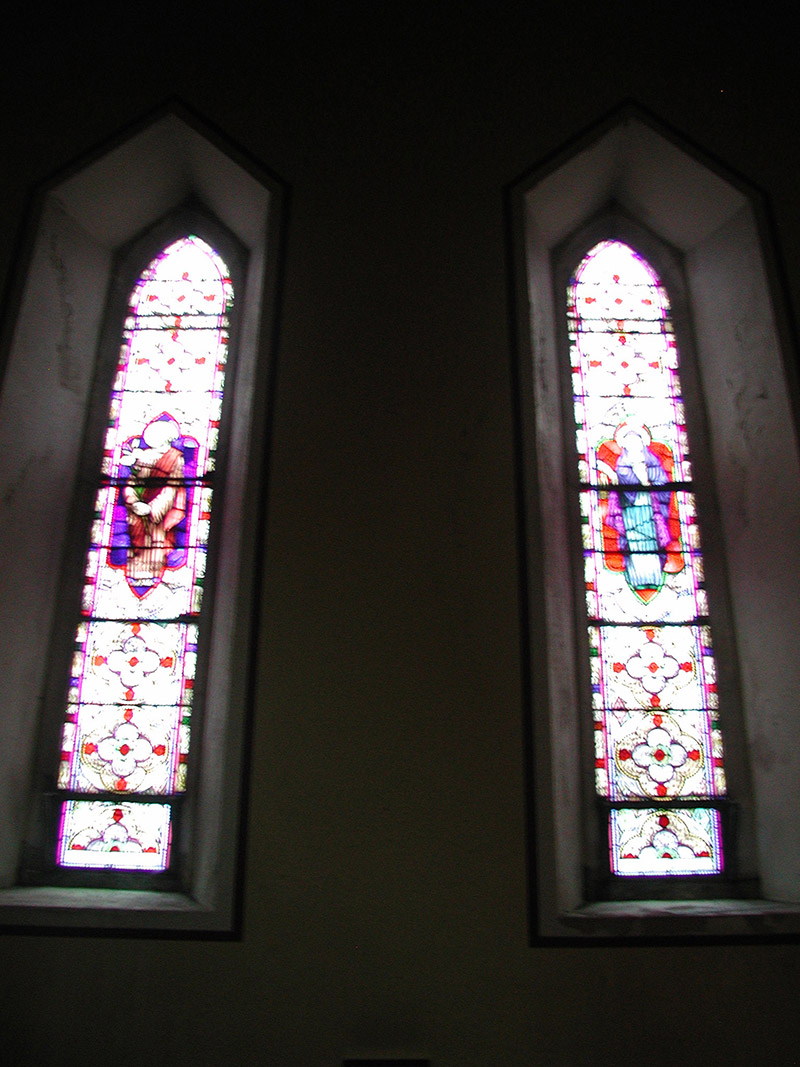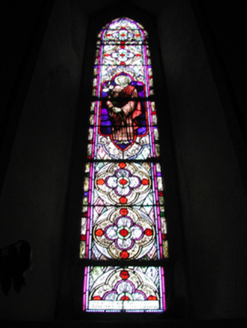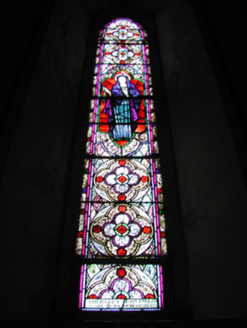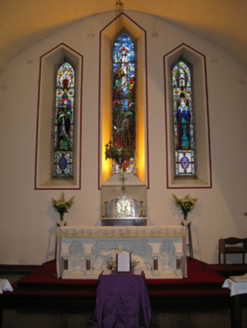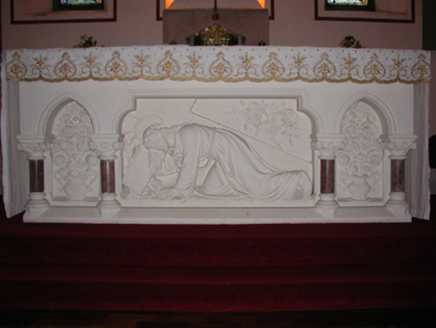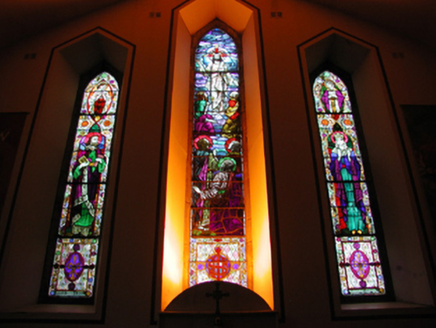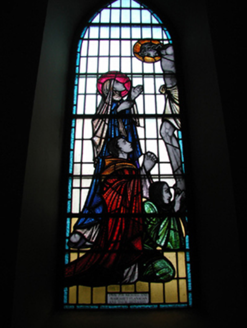Survey Data
Reg No
31306309
Rating
Regional
Categories of Special Interest
Architectural, Artistic, Historical, Scientific, Social
Original Use
Church/chapel
In Use As
Church/chapel
Date
1875 - 1880
Coordinates
154313, 300429
Date Recorded
08/11/2010
Date Updated
--/--/--
Description
Detached six-bay double-height Catholic church, built 1877; opened 1877, on a cruciform plan comprising four-bay double-height nave opening into single-bay (single-bay deep) double-height transepts centred on single-bay double-height chancel to crossing (east). Renovated, 1970, with sanctuary reordered. Pitched slate roof on a cruciform plan, roll moulded clay ridge tiles with tooled limestone ashlar buttressed gabled bellcote to apex to entrance (west) front framing embossed cast-bronze bell, and cast-iron rainwater goods on box eaves retaining cast-iron downpipes. Repointed snecked rock faced rubble stone walls with benchmark-inscribed drag edged tooled hammered limestone flush quoins to corners including drag edged tooled hammered limestone buttresses to corners to entrance (north-west) front having drag edged tooled cut-limestone "slated" coping. Lancet window openings with repointed drag edged tooled hammered limestone block-and-start surrounds having chamfered reveals framing storm glazing over fixed-pane fittings having stained glass margins centred on square glazing bars. Paired lancet window openings (transepts) with repointed drag edged tooled hammered limestone block-and-start surrounds having chamfered reveals framing storm glazing over fixed-pane fittings having stained glass margins centred on leaded stained glass panels. Lancet "Trinity Window" (east) with repointed drag edged tooled hammered limestone block-and-start surrounds having chamfered reveals framing storm glazing over fixed-pane fittings having leaded stained glass panels. Paired lancet window openings to entrance (west) front with repointed drag edged tooled hammered limestone block-and-start surrounds having chamfered reveals framing storm glazing over fixed-pane fittings having stained glass margins centred on leaded stained glass panels. Pointed-arch door openings (transepts) with repointed drag edged tooled cut- or hammered limestone block-and-start surrounds having chamfered reveals framing timber boarded double doors. Full-height interior remodelled, 1970, with dragged cut-limestone stoups (west), carpeted central aisle between timber pews, paired stations between stained glass memorial windows (----) with round-headed arches (transepts) framing paired stained glass memorial windows (----), and pointed-arch chancel arch framing herring bone-pattern timber parquet stepped dais to crossing (east) with carpeted stepped "predella" supporting Gothic-style altar (1884) below stained glass memorial "Trinity Window" (----). Set in landscaped grounds.
Appraisal
A church representing an important component of the later nineteenth-century built heritage of County Mayo with the architectural value of the composition confirmed by such attributes as the cruciform plan form, aligned along a skewed liturgically-correct axis; the rock faced surface finish offset by "sparrow pecked" sheer limestone dressings demonstrating good quality workmanship; the slender profile of the openings underpinning a "medieval" Gothic theme with the chancel defined by an elegant "Trinity Window"; and the handsome bellcote embellishing the roof as a picturesque eye-catcher in the landscape. Having been well maintained, the form and massing survive intact together with quantities of the original fabric, both to the exterior and to the interior reordered (1970) in accordance with the liturgical reforms sanctioned by the Second Ecumenical Council of the Vatican (1962-5) where the thirteenth-century French Gothic-style Owens-Phillips and Harpey-Nolan Memorial Windows (----); a much modified altar consecrated (1884) by Reverend Francis McCormack (1833-1909), Bishop of Achonry (fl. 1875-87); and the jewel-like Morrisroe Memorial "Trinity Window" (----), all highlight the artistic potential of a church forming part of a self-contained group alongside the diagonally opposing parochial house (see 31306310) with the resulting ecclesiastical ensemble making a pleasing visual statement in a rural village setting: meanwhile, a discreet benchmark remains of additional interest for the connections with cartography and the preparation of maps by the Ordnance Survey (established 1824).
